Canon 200mm f2.8L USM MkII
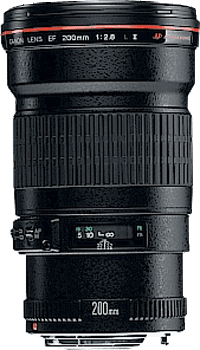 |
What lens should you take for a South African wildlife safari? I had been hoping that by the time I went to South Africa Canon, Sigma or Tamron would have come up with a high quality but acceptably light-weight and preferably image-stabilised telephoto zoom specially designed for digital cameras. Failing that, I was planning on taking my Canon 75-300IS, which should have the ideal range of focal lengths even if it was a bit challenged in the aperture department.
After a few test shots with the 75-300IS on my day of departure to South Africa, I decided it wasn't sharp enough and took an emergency trip to Jessops to buy something better.
A lot is written about the latest wonder-lenses, but if I hadn't seen the Canon 200mm f2.8L in Jessops' window a few days earlier, I would never have considered it as an option. I knew it existed but had always assumed f2.8L telephoto lenses were those huge things you see sports photographers propping up with tripods on the sidelines of football matches. In reality, you can fit one of these in the same space the 75-300IS would have occupied in your camera bag.
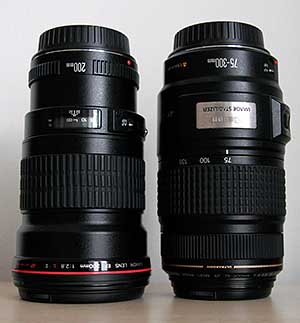 200 f2.8L next to the 75-300IS |
The 200mm f2.8L doesn't even cost all that much more than the 75-300 f4-5.6 (with some haggling, I got mine for £475 at Jessops compared with the 75-300IS which has an RRP of around £400). But that is where the similarities end. With the 200 f2.8L you lose the image stabilisation, and even the ability to zoom, compared with the 75-300. What you gain is instantaneous autofocus, and crystal clarity through the viewfinder. When I mounted it on the 20D in Jessops and half-pressed the shutter the prime lens put a smile on my face immediately. It feels indestructible, it is made out of things lenses ought to be made out of (glass and metal) and the results are spectacular.

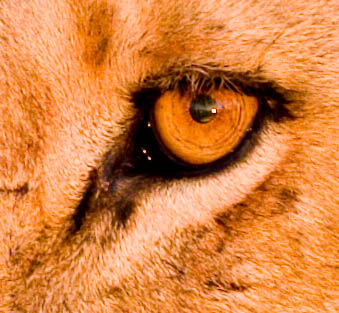
The eye above is a 100% "actual pixels" crop from an 8 megapixel EOS 20D frame. It is untouched, exactly as it came out of the raw converter (Adobe Camera Raw). Camera Raw does add some sharpening by default, but with pictures from all other lenses I've ever used, I need to add additional sharpening in Photoshop. This lens is so sharp anyway, more sharpening can make images look artificial.
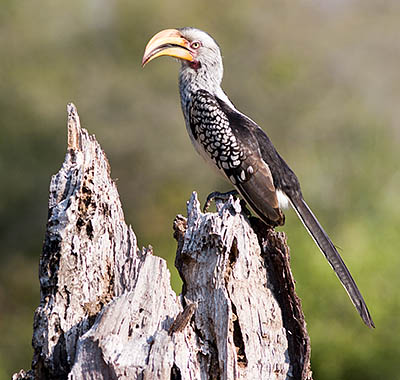
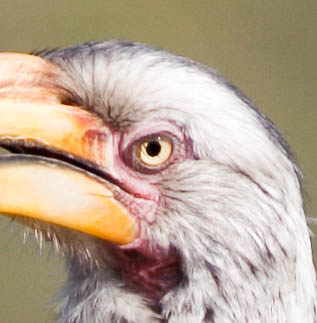
For wildlife photography, I would take this lens in preference to the 75-300IS any day. The fast aperture enables you be be amazingly accurate with focusing, which is helped by the incredibly smooth full-time manual focussing ring. I found myself using this all the time in South Africa, not because the EOS 20D's autofocus wasn't good, but because the camera can't mind-read so it doesn't know where the animal's eye is. The other benefit of the fast aperture is limited depth of field. As the hornbill image above shows, the 200mm f2.8 has a beautifully diffuse out-of-focus area or "bokeh". I think the narrow depth of field and smooth appearance is partly a result of the design of the lens as well as the fast aperture, and gives subjects the appearance of popping out of the background.
I didn't miss not being able to zoom very much. I always find telephoto zooms are used at one extreme or the other. The 70mm end is already covered by my 17-85IS, and although changing lenses is a pain, so is trying to hand-hold the big light-grey L-series zooms. The 200mm f2.8 is just as sharp (if not sharper), black, perfectly hand-holdable and doesn't need a separate camera bag all to itself. I'm extremely happy with it.